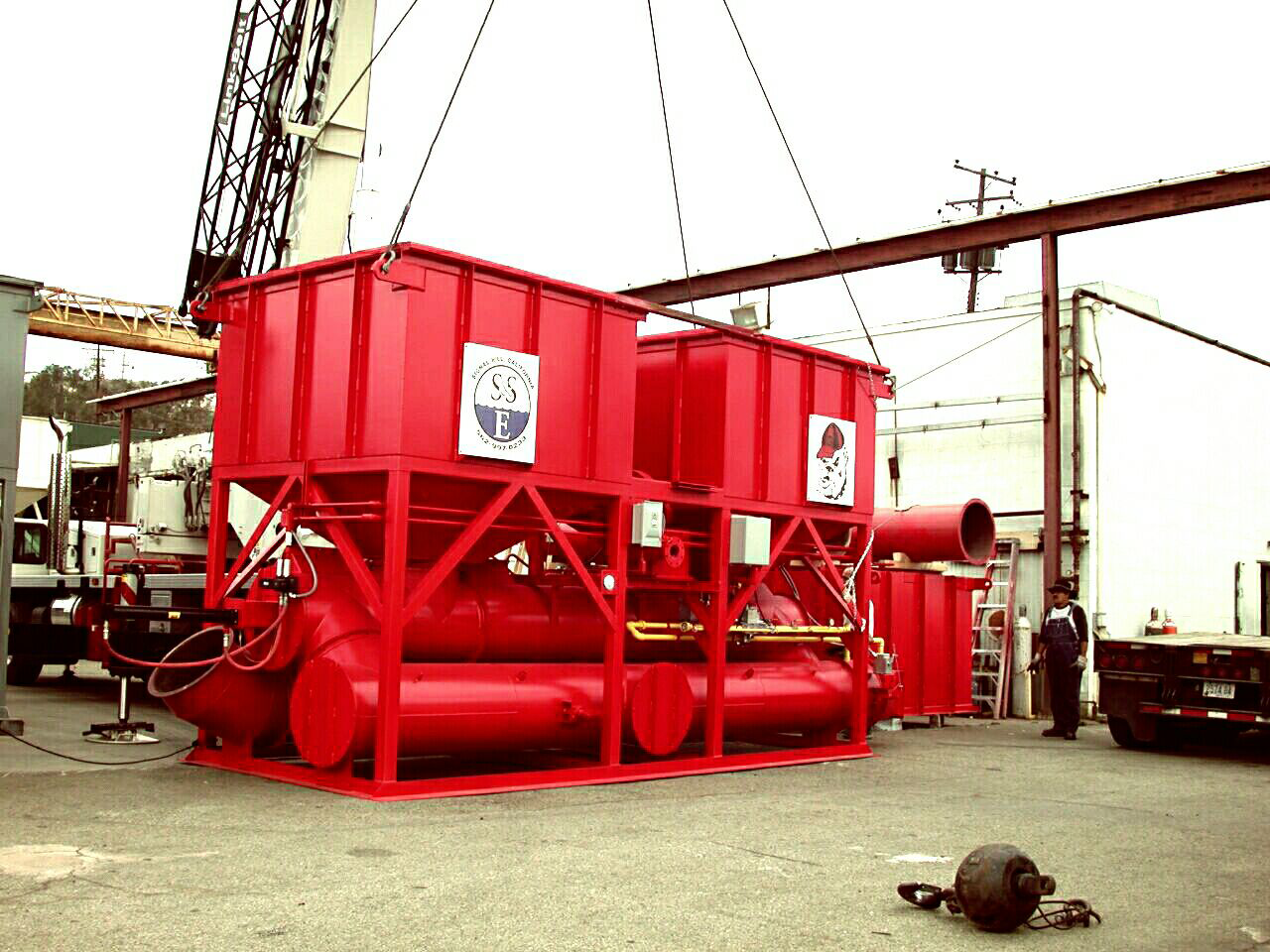
Maximize Efficiency with a Servicing Plan for Your Direct-Fired TO System
July 2, 2025 8:56 amUnderstanding the Importance of a Servicing Plan for Your Direct-Fired TO System
The cornerstone of any robust industrial setup is a well-maintained Direct-Fired Thermal Oxidizer (TO) system. By implementing a comprehensive servicing plan for your direct-fired TO system, you can ensure maximum operational efficiency and longevity. This plan not only safeguards the equipment but also underlines our commitment to environmental responsibility. The intricate design and functionality of these systems necessitate meticulous care and attention, making regular maintenance indispensable.
The Link Between Regular Maintenance and System Efficiency
Regular maintenance is the bedrock of system efficiency. When we adhere to a rigorous servicing schedule, we prevent minor issues from escalating into major problems. This consistent attention helps sustain the operational integrity of the TO system, enhancing its ability to manage volatile organic compounds (VOCs) and hazardous air pollutants (HAPs) effectively. Without regular checks and updates, the system’s performance can degrade, leading to inefficiencies that could impact overall productivity and environmental compliance.
Highlighting the Risks of Negligence Towards Your Direct-Fired TO System
Neglecting your direct-fired TO system can result in a multitude of adverse effects. From mechanical failures and suboptimal performance to heightened safety risks and costly downtime, the consequences of neglect are far-reaching. Furthermore, regulatory penalties for non-compliance with environmental standards can be severe, not to mention the potential damage to our reputation. Therefore, proactive maintenance is not just a best practice; it’s a critical necessity.
How a Servicing Plan Can Mitigate Risks
A well-structured servicing plan for your direct-fired TO system addresses potential issues before they become critical threats. This proactive approach involves routine inspections, timely repairs, and thorough cleanings, ensuring that the system operates at peak efficiency. Such a plan also keeps us aligned with industry regulations, ensuring that our operations remain both compliant and efficient.
Environmental and Economic Benefits
Implementing a structured servicing plan offers dual benefits – environmental and economic. A well-maintained system operates more efficiently, reducing energy consumption and minimizing emissions. This not only helps us meet our sustainability goals but also lowers operational costs. In the long run, the investment in regular maintenance pays off through savings on energy bills and reduced likelihood of expensive emergency repairs.
Key Components of a Comprehensive Servicing Plan for Your Direct-Fired TO System
A comprehensive servicing plan for your direct-fired TO system is crucial for maintaining optimal performance. First and foremost, routine inspections are essential. These inspections help identify wear and tear, as well as potential issues that could compromise the system’s efficiency. Regular cleaning of burners and heat exchangers also ensures that the system operates at peak efficiency. Moreover, replacing faulty components before they fully malfunction can prevent unexpected downtimes.
Another key component is the calibration of control systems. Accurate calibration guarantees that the system functions within its designed parameters, thereby enhancing performance and reducing emissions. Additionally, monitoring the air-to-fuel ratio helps in maintaining the system’s combustion efficiency. Collectively, these practices form the backbone of a robust servicing plan for your direct-fired TO system.
The Role of Professional Engineers in System Maintenance and Troubleshooting
Professional engineers play an instrumental role in system maintenance and troubleshooting. Their expertise is invaluable when it comes to diagnosing complex issues that routine checks might miss. Engineers can perform detailed analyses, such as thermal imaging and vibration testing, which help in identifying underlying problems. Moreover, they can offer tailored solutions designed to optimize system performance.
Furthermore, professional engineers can provide valuable advice on upgrading system components. Continuous development in technology means more efficient and reliable parts become available. Consulting with engineers ensures you are informed about the latest advancements that can be incorporated into your system.
Maximizing System Longevity and Performance Through a Strategic Servicing Plan
A strategic servicing plan for your direct-fired TO system is essential for maximizing both longevity and performance. This plan should be designed with a clear schedule, encompassing daily, monthly, and annual tasks. Regularly scheduled tasks ensure that no aspect of the system is overlooked, thereby prolonging its operational lifespan.
Here are some critical elements to include in your servicing plan:
- Daily visual inspections for immediate issues
- Weekly cleaning and minor maintenance tasks
- Monthly performance evaluations and efficiency tests
- Annual comprehensive inspections and overhauls
- Periodic updates and upgrades based on the latest technology
By adhering to this structured plan, you ensure that every component of your direct-fired TO system receives the attention it needs. This minimizes the risk of sudden failures and keeps the system running smoothly, thus reducing operational costs in the long run.
Implementing a strategic servicing plan not only enhances the system’s performance but also ensures compliance with regulatory standards. Given the stringent environmental regulations, adhering to a well-structured maintenance schedule can prevent hefty fines and legal issues.
Moreover, the benefits extend beyond compliance. An efficiently maintained system is more environmentally friendly, as it reduces emissions and conserves energy. Consequently, regular servicing contributes to a greener footprint for your operations.
In conclusion, incorporating regular, expert-driven maintenance into your servicing plan for your direct-fired TO system will yield substantial benefits in terms of efficiency, longevity, and compliance. With the right approach, you can future-proof your industrial processes and achieve optimal performance.
Did you know? Regular maintenance of your Direct-Fired TO system not only optimizes efficiency but also ensures regulatory compliance, potentially preventing costly fines and downtime.
The Cost and Environmental Benefit Balance of Regular Servicing for Your Direct-Fired TO System
Maintaining a robust servicing plan for your direct-fired TO system is not just a matter of operational efficacy but also a financial and ecological imperative. The upfront investment in routine maintenance pays off manifold by minimizing unexpected repairs and downtimes. This proactive approach can significantly reduce your overall operational costs while maximizing the performance and reliability of your system. Furthermore, an efficiently operating system ensures reduced emissions, contributing to a healthier environment. This dual benefit of cost-saving and environmental stewardship reinforces the necessity of a well-executed servicing plan for your direct-fired TO system.
Ensuring Regulatory Compliance with an Adequate Servicing Plan
Regulatory compliance is a crucial aspect that cannot be overlooked. Various federal and state regulations mandate specific standards for emissions and operational integrity. Regular servicing ensures that your direct-fired TO system meets all these regulatory requirements. By staying compliant, you not only avoid hefty fines and operational shutdowns but also contribute to the overall sustainability goals of your organization. A comprehensive servicing plan for your direct-fired TO system includes routine inspections, tuning, and compliance audits, which are essential for adhering to the ever-evolving regulatory landscape.
Future-Proofing Your Industrial Processes with a Well-Maintained Direct-Fired TO System
Investing in a well-rounded servicing plan doesn’t just address current operational challenges – it also future-proofs your industrial processes. As technology advances and industrial standards evolve, your direct-fired TO system must keep pace. Regular maintenance and upgrades, preventive checks, and the careful calibration of various components ensure that your system remains at the cutting edge of efficiency and reliability. Incorporating aftermarket services can further enhance the longevity and performance of your system, ensuring that it remains a valuable asset to your operations for years to come.
FAQ
What are the benefits of regularly maintaining our direct-fired thermal oxidizer?
Incorporating regular maintenance ensures operational efficiency and reliability, leading to decreased chances of unexpected breakdowns and repairs. Additionally, it offers financial savings by reducing costly downtime, extends the lifespan of your equipment, and supports a greener footprint through optimized performance and reduced emissions.
How does a maintenance plan help in adhering to environmental regulations?
A strategic maintenance schedule is fundamental in ensuring that your thermal oxidizer complies with environmental regulations. By conducting regular inspections, fine-tuning, and compliance audits, we can guarantee adherence to current standards, circumventing the risk of penalties and contributing to sustainable industry practices.
Is professional engineering support necessary for the maintenance of our system?
Indeed, professional engineering expertise is paramount for both preventive and corrective maintenance. Experts not only troubleshoot and resolve complex issues but also provide insights into optimizing system performance, ultimately enhancing the longevity and functionality of the equipment.
What components are included in a comprehensive maintenance plan?
Our maintenance plan encompasses a thorough examination of structural integrity, component functionality, and system controls. It also involves cleaning, part replacements, and performance testing to ensure your equipment operates at peak efficiency and safety.
How does regular servicing future-proof our thermal oxidizer operations?
Committing to ongoing upkeep prepares your equipment for long-term service. It keeps your system updated with the latest technological advancements and efficiency benchmarks, ensuring it continues to be a vital component in your industrial processes well into the future.
Categorised in: Blog

